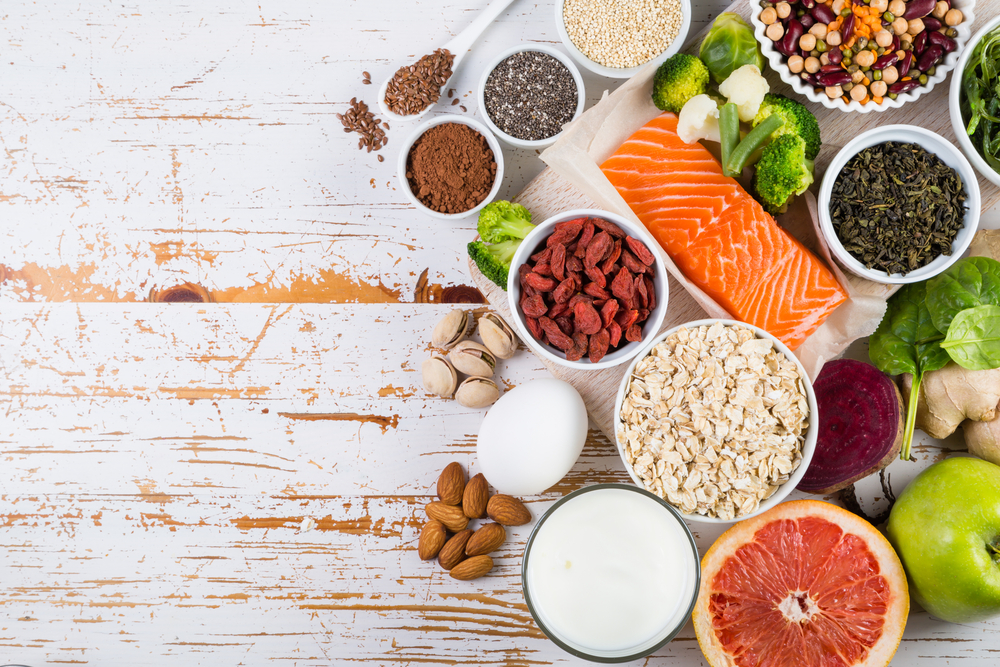Balanced Diet to Maintain Optimal Health in Parkinson’s Patients: A Nutritionist’s View
Written by |

Parkinson’s disease has typically been classified as a neurodegenerative disease with much of treatment focused on managing symptoms. However, recent connections between the brain and gut microbiome as it is influenced by nutrition, oxidative stress, and the environment has been gaining interest.
In a 2015 article from the World Journal of Gastroenterology, the authors said: “A better understanding of the brain-gut-microbiota axis interactions should bring a new insight in the pathophysiology of [Parkinson’s and] permit an earlier diagnosis with a focus on peripheral biomarkers within the ENS [enteric nervous system]. … Dietary or pharmacological interventions should be aimed at modifying the gut microbiota composition and enhancing the intestinal epithelial barrier integrity in [Parkinson’s] patients or subjects at higher risk for the disease.”
The vast population of microorganisms, called the microbiota, live mainly within the gastrointestinal tract and vary greatly. It is widely accepted that highly diverse and stable microbiota promote overall human health.
When this balance is disrupted, changes can occur on several levels across many body systems. Excessive stimulation of the innate immune system resulting from gut dysbiosis (bacteria imbalance) and/or small intestinal bacterial overgrowth and increased intestinal permeability may induce systemic inflammation; investigating and understanding this connection may lead to new therapeutic possibilities in Parkinson’s.
Findings show that gastrointestinal dysfunction, especially constipation, is associated with a higher risk of developing Parkinson’s and may precede motor symptoms by more than a decade.
This insight into the alleged root cause of Parkinson’s is important and can offer opportunities for new preventive pathways as well as provide creative solutions for treatment, potentially inhibiting the progression of the disease.
Important interventions are probiotics, specifically Lactobacilli, Enterococci, Bifidobacteria, and prebiotics, which are non-digestible oligosaccharides (carbohydrates) that selectively stimulate the growth and activity of bacteria in the gut, producing metabolites.
Probiotics can be ingested either through supplementation or through the consumption of fermented foods such as sauerkraut, kimchi, kefir, and miso; this strategy directly introduces beneficial bacteria into the gut microbiome.
When prebiotics are metabolized by the bacteria, they produce a byproduct of short chain fatty acids (SCFAs) essential to gut integrity and immunity. One of these SCFAs is butyrate.
A 2016 article reported, “Butyrate has also been shown to interact with the ENS and to increase colonic contractility. In critically ill subjects, lower concentrations of butyrate are associated with dysmotility. Taken together, these data are compatible with the assumption that reduced concentrations of butyrate in the feces of [Parkinson’s] patients might exert relevant effects on the ENS and might contribute to gastrointestinal dysmotility, a frequent non-motor symptom in [Parkinson’s].”
Oxidative stress and inflammation have also been at the center of many proposed mechanisms underlying cell death in Parkinson’s, and therefore, much of the focus of nutritional interventions has been on antioxidants. Recently, however, anti-inflammatory compounds such as curcumin (turmeric) have been introduced as an option for regulating the gut-brain axis as well.
So when it comes to diet, here are some of my suggestions:
- Include foods that have a high nutritional profile complete with probiotics and essential micronutrients such as folate, B vitamins, and flavonoids. These are associated with lower Parkinson’s risk as well as a decrease in functional decline and aging.
- When thinking about the type of diet to reference, the Mediterranean diet is emerging as a potential neuroprotective alternative for Parkinson’s. This diet includes fresh fruits and vegetables, fresh fruit, nuts, seeds, non-fried fish, olive oil. coconut oil, wine, fresh herbs, and spices.
- Foods that have been statistically significant in increasing the progression of the disease and should be avoided are canned fruits and vegetables, soda, fried foods, beef, and ice cream, cheese, and those rich in iron.
- Supplementing with fish oil and CoQ10 has been recommended due to their anti-inflammatory and mitochondria/cellular protective properties respectively. Supplementation should always be monitored by a medical professional.
Research on microbiome-directed therapy is still being conducted, yet provides compelling arguments that these therapies may have a significant influence on the pathological progression of Parkinson’s. The combination of dietary supplementation and a low inflammatory diet may in fact prove to be a core factor in how we approach treatment in the future.
***
Alana Kessler, MS, RD, CDN, E-RYT, is a registered dietitian, nutritionist, weight management expert, and an accredited member of the CDR (Commission on Dietetic Registration) and the American Dietetic Association. She is also a yoga and meditation teacher, Ayurveda specialist, and the founder of the New York City-based fully integrated mind, body, and spirit urban sanctuary, BE WELL. Alana’s BE WELL ARC System and Method Mapping technique is a holistic multidisciplinary approach to health and wellness that blends Eastern and clinical Western diet and lifestyle support to effect long-lasting behavior change.
A graduate of NYU with a BA and MS in clinical nutrition, Alana is dedicated to helping others learn how to nourish themselves, create balance, and understand their true nature through nutrition, yoga, and inner wellness. She leads Yin Yoga workshops and trainings as well as wellness retreats at international locations. Her health, fitness, and lifestyle expertise has been featured in Aaptiv.com, Droz.com, EatThis.com, RD.com, Redbook, WomensHealthmag.com, and Vogue. For more information, visit her website at bewellbyak.com.






